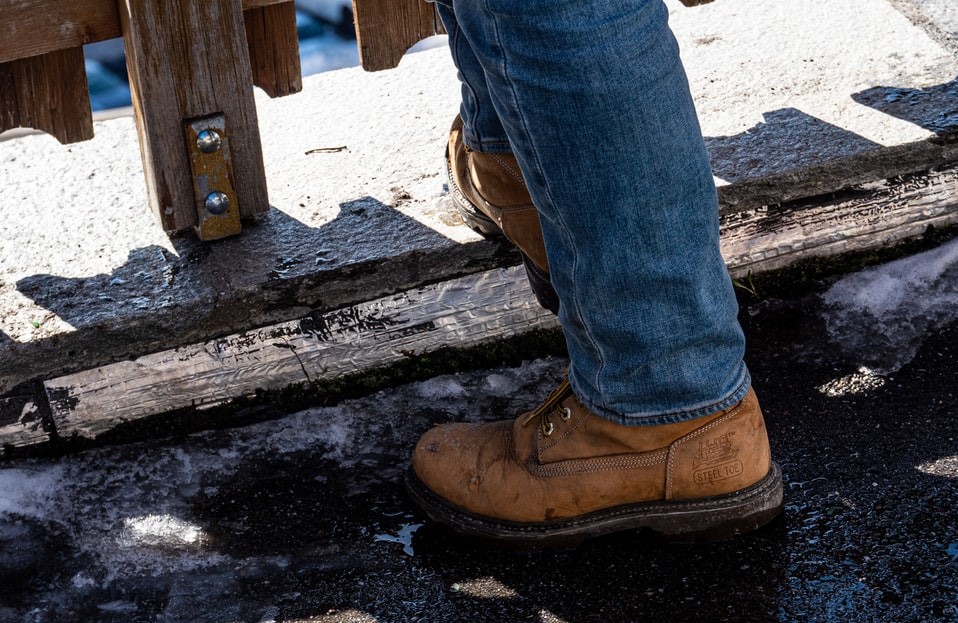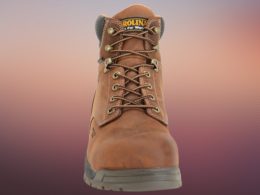Workwear Guru is reader-supported. When you buy through links on our site, we may earn an affiliate commission. Learn more
Construction shoes consist of many different parts, all equally important. These elements make your boots ideal to wear while you are working on a construction site for long hours. When choosing your pair of work boots, there are two main elements that a perfect pair of boots should have: sturdiness and comfort, and the main element that gives your footwear the sturdiness it needs is the shoe shank.
If you are asking what is the shank of a boot, a way to explain is that a shoe shank is the spine of the whole structure of your footwear, meaning that everything is impacted by the shank in your shoes when it comes to the contact of the bottom of the foot with surfaces and how your shoe interacts with it.
What Is a Shoe Shank?

The shank is a piece of material that is placed between the insole, the upper, and the midsole of a shoe. The upper, insole, and midsole are stitched to the outsole structure, creating your ideal pair of work boots.
Your boots will flex significantly more than they should if they lack a firm shank. This is acceptable or even ideal in a pair of comfortable athletic shoes. Your foot may need to flex for sports or workouts, or you may just want a good, light shoe that’s pleasant to wear for these types of activities. However, if you work in the construction industry and if you’re going to be walking on concrete and uneven ground all day, or even climbing ladders, you’ll want your footwear to be as firm as possible.
Having a sturdy shoe shank provides shock absorption and ensuring that your feet’s bones are not subject to excessive vibration or abrasion.
In most outdoor boots and work boots, the shoe shank is usually the weakest link. A manufacturer that uses mainly poor materials to create their work boots will, of course, create a weaker product and ultimately a poorly designed shank.
The shoe shank functions similarly to the beams that hold a building together, meaning that all of the other parts are either joined to it or reinforced by it, creating the structure and the rigidity required to keep it all together.
What Are the Types of Shoe Shanks?
Different types of shoes consist of different types of shoe tanks. However, the most common types of shoe shanks include steel shanks, nylon, plastic, and fiberglass shanks, a combination of fiberglass and kevlar shanks, and finally steel combination shanks. All these different types of shoe shanks, of course, serve different purposes.
Below we have explained each type of shoe shanks that you can find in the marketplace nowadays, their purpose, and why they may be just the right fit for you.
Steel shanks
A steel shank is a piece of steel that is mainly flat and thin and is found between the outsole and insole of a piece of footwear. It is rectangular in shape and is made out of a very durable steel material that protects the bottom of the foot from any possible injuries a construction worker may encounter in a dangerous construction workplace. Since steel shanks are very long-lasting, you will not have to buy a new pair of work boots for a very long time, and this way you will save yourself a lot of money.
These steel shoe shanks offer puncture resistance, stability, comfort, and arch support, especially for people that are obligated to work standing up and for those who have prolonged working hours. In addition, this type of shoe shank reduces injuries, bruises, and discomfort caused by walking in terrains with stones, uneven ground, or climbing a ladder. Moreover, steel shoe shanks help in maintaining the shape of the shoe intact for longer periods of time.
Nylon shanks
Nylon shanks are far more different than steel shoe shanks. They are softer, and yet extremely supportive and, undoubtedly, comfortable. They are flexible and lightweight due to their special material, and they allow you to walk and function far more easily.
Nylon shoe shanks give the right amount of bend, allowing for pleasantly natural movements of your feet. Since they are not made of steel, the only downside of this type of shoe shanks is that they lack sturdiness when the feet are in contact with sharp objects and rocks. However, they are still quite helpful for stabilizing your steeps just as effectively as steel shoe shanks are.
Plastic shanks
Plastic shanks are very similar to nylon shanks since they are both made out of elastic material. Plastic shanks are softer and warmer than steel shoe shanks, yet they still give your ankles all the support they may need. In addition, they are bendable enough to create very natural movements.
Fiberglass shanks
Fiberglass shanks are also known as composite shanks due to their constituent materials. Fiberglass shoe shanks are way warmer and softer than typical steel shanks.
Due to their material, fiberglass shanks are the most lightweight and flexible type of shank. But, despite their flexibility and lightweight properties, fiberglass shanks can still hold just as much weight as steel shoe shanks. Fiberglass shoe shanks provide enough room to create plenty of natural movement.
In addition, fiberglass shoe shanks offer a lot of support, which helps to ease the stress and pain in your arches and ankles. Nowadays, more and more construction workplaces are adopting this type of shoe shank to provide their workers with a lightweight and flexible alternative.
Fiberglass and Kevlar shanks
In most cases, manufacturers use more than one type of material to create shoe shanks. A combination of fiberglass and Kevlar shanks is also a pretty common choice when designing work boots.
Fiberglass and Kevlar shanks are sturdy, comfortable, and very supportive. They are less heat-conductive compared to other types of shoe shanks, but they are still just as reliable as the rest of them.
Steel combination shanks
When it comes to steel combination shanks, we can say that they have everything you have been looking for. Steel combinations with plastic, nylon, and fiberglass, of course, create more flexibility than solid steel shoe shanks do. The number one advantage of these shoe shanks is that you’ll have the strength and sturdiness of metal paired with a more lightweight element.
How Are Shoe Shanks Attached?
Most shoe shanks are whipstitched, glued, or even tacked into their place. They are placed and secured between the insole, the upper, and the midsole in order to help you keep up with your demanding work schedule and different work conditions.
Benefits of a Sturdy Shank

A sturdy boot shank helps construction workers keep their pricey footwear in great working conditions for a very long time, which is an aspect that many buyers should consider before purchasing their footwear.
In addition, sturdy shanks offer workers more comfort, balance, as well as support to their overworked arches. Simultaneously, a high-quality shoe shank is very useful in hazardous environments and in construction sites where there is a great danger of being pierced by different kinds of sharp objects from below.
Ultimately, one can say that shoe shanks are definitely created for a purpose. Different types of boot shanks serve different purposes, however, at the end of the day, all shoe shanks are created to give you support and comfort as well as to protect you in possible hazardous situations that you may encounter when working in the construction industry.











